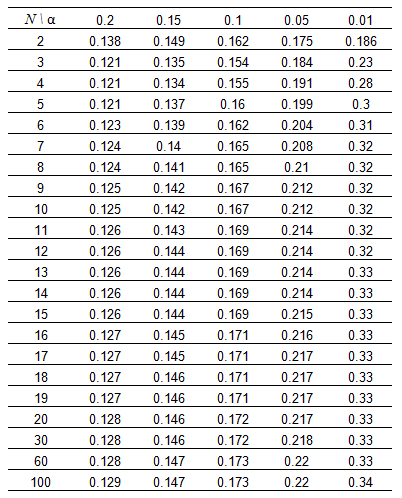GE Digital APM uses two different methods to calculate GOF for Reliability Growth Analyses, depending on whether or not the analyses use grouped data.
Goodness of Fit (GOF) for a Reliability Growth Analyses based on data that is not grouped is calculated using the Cramer-von Mises test.
For analyses whose end date is time-based, Cramer-von Mises test uses the following formula to calculate the GOF Statistic:

For analyses whose end date is event-based, Cramer-von Mises test uses the following formula to calculate the GOF statistic:

Goodness of Fit for a Reliability Growth Analysis based on grouped data is calculated using a Chi-squared test. This test uses the following formula to calculate a test statistic:


